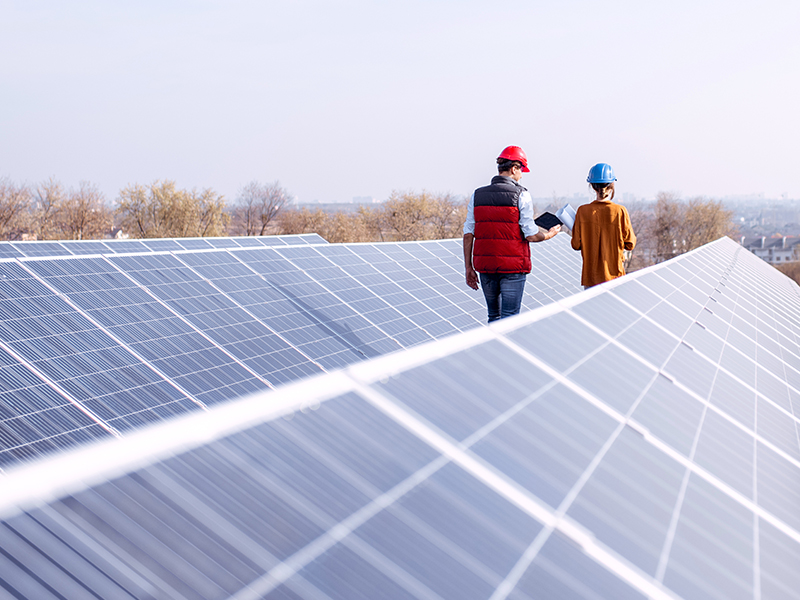Ireland has been making a big push toward renewable energy for several years. The government has pledged that 70% of energy will come from renewables by 2030 and to be a carbon-neutral economy by 2050, among other goals.
However, the country’s solar provision is seriously behind that of other countries, and behind where it needs to be, said Philip Connor, head of energy services for energy supplier Pinergy. A country needs a full range of renewable energy sources to provide enough continuous power.
“Ireland has a largely immature solar market, it’s barely out of the block,” Connor said. “There are a few large-scale systems on rooftops but it was only in July that the first solar farm opened. There’s a lot in planning but there’s a real education element to what can be done. When planned correctly, installing a solar energy system on a property can bring a lot of benefits.”
The Benefits Brought By Solar
On a national level, the main benefit to creating more solar farms is to create a more secure supply of renewable energy, Connor said.
“Ireland has invested heavily in wind — 90% of our renewables is wind,” he said. “But this year the wind hasn’t blown so much. Add to that how some grid-level generators have been turned off recently for maintenance and it’s been sunny, so people have used more air conditioning and refrigeration, and the result is that the sector is being hit by rising energy prices. What we need is a mix of wind and solar, they complement each other.”
On a local level, the main driver for property owners both large and small to install solar is the financial savings. Self-generating energy for property is a lot cheaper than buying energy from the national grid. The cost of the technology has dropped significantly in recent years and while the upfront cost of installing the system still needs to be absorbed, looking at the long-term gain makes it worth it.
“It’s a form of hedging,” Connor said. “A property owner will be buying a volume of energy for 25 years; paying upfront for it will ensure they get the best value. People need to be educated to realise this is a long-term play. To a property company with a 10-15-year view of their portfolio, the investment is justified as the system will produce the yield needed.”
Once a solar system is installed, it is largely “fit and forget” technology, Connor said. It is very low maintenance, which also means that property owners can be confident that they will be getting a consistent supply. It’s a myth that solar panels need the sun to shine to be effective; that helps, but it’s down to daylight hours, which Connor said Ireland has more than enough of to produce a steady supply.
A final benefit is that installing a source of renewable energy will boost a property owner’s ESG credentials. A system installed by Pinergy, for example, can report on the solar generation of a property hour by hour, the sort of granular information that investors increasingly ask for.
To realise these benefits, however, it’s crucial for a property owner to install a system of the right size. For example, installing a system that is too big will make it harder to justify the investment, even though the forthcoming feed-in tariff will generate some money from surplus energy produced.
Pinergy recently acquired Solar Electric, Ireland’s leading designer and installer of solar renewables and energy storage systems. The two companies had worked together for some time, but the acquisition puts Pinergy in an even stronger position to advise customers on how to choose the right system to minimise costs.

The Need For Solar Will Increase
The late arrival of a feed-in tariff has been one factor holding back Ireland’s solar sector, Connor said. It was supposed to kick in from July, but it has been delayed. Similarly, the much-awaited changes to planning laws to allow larger solar systems to be installed on roofs without planning permission still haven’t arrived.
However, when both the feed-in tariff and planning amendment do arrive, adoption of solar could increase rapidly as property owners realise the potential benefits. People and businesses will also increasingly see the need to relieve pressure on the national grid. While many more solar farms are in planning, with a wave due to be delivered early next year, it still makes much more sense for property owners to generate as much energy locally as they can.
“The need to charge electric vehicles is an emerging trend at the moment and will soon have a significant impact on demand locally,” Connor said. “Most electric vehicles will be charged at home. If this is in a PRS scheme, you could expect the need to double the block’s overall energy supply. This could a be significant challenge both locally and nationally.”
Already, energy prices are only going one way, a trend that will be exacerbated as pressure on the national grid increases. Creating the ability now for a property owner to self-generate the energy a property needs is likely to pay dividends in years to come.
This article was produced in collaboration between Pinergy and Studio B.

